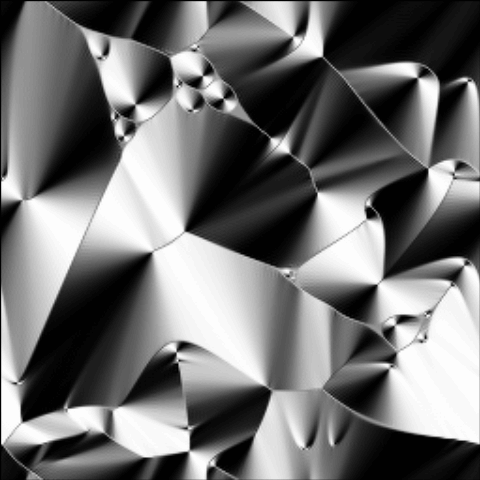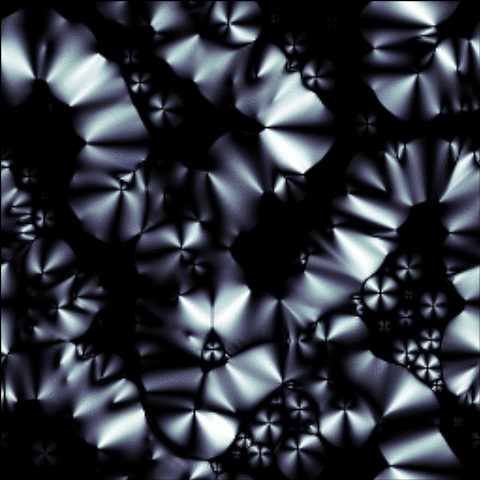

This leads to defects that form focal conics -- ellipses and hyperbolas.
In this set of animations, we show simulation results for the dynamical evolution of smectic-A liquid crystals. Experiments are often performed by putting the smectic between two microscope slides. The slides can have different anchoring conditions. Planar boundary conditions are treatments which align the smectic molecules parallel to the glass slides, meaning the layers are perpendicular to the slide. Homeotropic boundary conditions align the layers parallel to the slide (and hence flat). Planar boundary conditions naturally attach one of the two confocal conics in each domain to the microscope slide, so imaging the top and bottom is the natural thing to do. For homeotropic boundary conditions, the top and bottom are flat and boring, so experimentalists (and simulators) examine instead an intermediate height in the sample. In each case, the images are taken with light (simulated or real) transmitted through crossed polarizers on either side: the dark and light regions show the defect structures.
For planar anchoring under external shear, the focal conics in the experiments and simulations seem qualitatively similar.
Here the simulation differs from the experiment in at least two important
ways. First, the simulation has large 'bands' separating the cross-hatched
circles (representing a vertical focal conic defect representing the dimple
near the stem of the 'apple-shaped' focal conic layers. Second, the
experiment under shear destroys the original focal conic defects, and
develops a new pattern of domains with eccentricity perpendicular to the
direction of shear. Whether this represents differences in the parameters
of the simulation and the experiment (relative elastic or viscous constants
or rates), or important new physics (dislocations omitted from the simulation)
remains to be discovered.
James P. Sethna, sethna@lassp.cornell.edu; This work supported by the Basic Energy Sciences division of the Department of Energy, through grant DE-FG02-07ER46393, and by the National Science Foundation CBET-PMP 1232666 and DMR-1056662.
![]() Statistical Mechanics: Entropy, Order Parameters, and Complexity,
now available at
Oxford University Press
(USA,
Europe).
Statistical Mechanics: Entropy, Order Parameters, and Complexity,
now available at
Oxford University Press
(USA,
Europe).